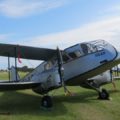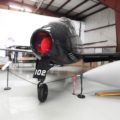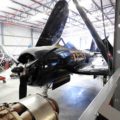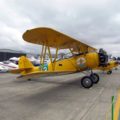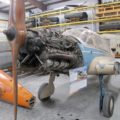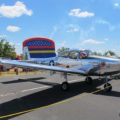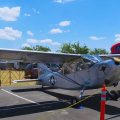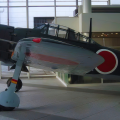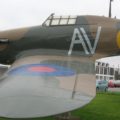
LVG C.VI | |
|---|---|
| Χώρα | Γερμανία |
| Ρόλο | Αναγνωριστικά αεροσκάφη |
| Πρώτη πτήση | 1917 |
| Χτισμένο | 1100+ |
Teh LVG C.VI ήταν ένα γερμανικό διθέσιο αναγνωριστικό και πυροβολικό αεροσκάφος που χρησιμοποιήθηκε κατά τη διάρκεια του Α 'Παγκοσμίου Πολέμου.
| LVG C.VI Walk Around | |
|---|---|
| Φωτογράφος | Unknow |
| Εντοπισμού | Αγνοώ |
| Φωτογραφίες | 43 |
Δείτε επίσης:
κείμενο Το LVG C.VI ήταν ένα διθέσιο αναγνωριστικό και πυροβολικό αεροσκάφος που αναπτύχθηκε και κατασκευάστηκε από τη γερμανική εταιρεία Luft-Verkehrs-Gesellschaft (LVG) κατά τη διάρκεια του Α 'Παγκοσμίου Πολέμου. Βασίστηκε στο προηγούμενο μοντέλο LVG C.V, αλλά είχε μικρότερο και ελαφρύτερο σχεδιασμό με καλύτερη αεροδυναμική. Το LVG C.VI είχε ξύλινη και μεταλλική δομή διπλάνου με ημι-μονοκόκ άτρακτο καλυμμένη με κόντρα πλακέ. Τροφοδοτούνταν από έναν μόνο κινητήρα Benz Bz.IV που οδηγούσε μια ξύλινη έλικα δύο λεπίδων. Το αεροσκάφος διέθετε σταθερό σύστημα προσγείωσης με οπίσθια ολίσθηση και ψυγείο νερού στην άνω πτέρυγα. Το πλήρωμα αποτελούνταν από έναν πιλότο και έναν παρατηρητή, οι οποίοι είχαν πρόσβαση σε ραδιοπομπό, αλεξίπτωτα και θερμαινόμενες ιπτάμενες στολές. Το C.VI LVG ήταν οπλισμένο με ένα σταθερό και ένα κινητό πολυβόλο και μπορούσε να μεταφέρει έως και 90 κιλά βόμβες.
Το LVG C.VI εισήλθε σε υπηρεσία το 1918 και χρησιμοποιήθηκε από τη γερμανική Luftstreitkräfte κυρίως στο Δυτικό Μέτωπο για αποστολές στενής αναγνώρισης και παρατήρησης. Χρησιμοποιήθηκε επίσης από άλλες χώρες μετά τον πόλεμο, όπως η Πολωνία, η Φινλανδία, η Λιθουανία, η Τσεχοσλοβακία, η Ελβετία και η Σοβιετική Ένωση. Μερικά από τα αεροσκάφη μετατράπηκαν σε επιβατικά αεροπλάνα από τον Raab-Katzenstein ως LVG P.I, P.II και RK-8 Marabu. Το LVG C.VI ήταν ένα από τα τελευταία γερμανικά διθέσια αεροσκάφη που παρήχθησαν μαζικά κατά τη διάρκεια του πολέμου, με περίπου 1.100 μονάδες να κατασκευάζονται. Σήμερα, υπάρχουν μόνο τρία σωζόμενα LVG C.VI, τα οποία εκτίθενται σε μουσεία στην Αγγλία, το Βέλγιο και τη Γαλλία.
Θεάσεις : 1342



